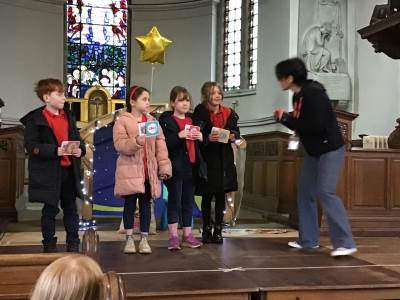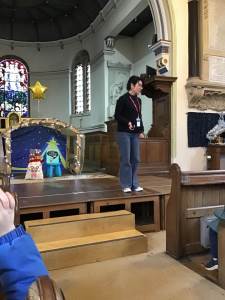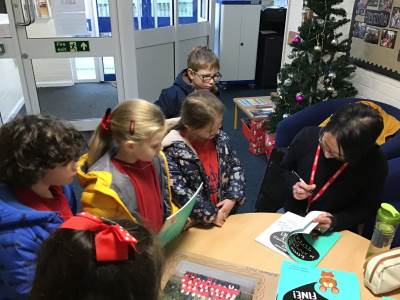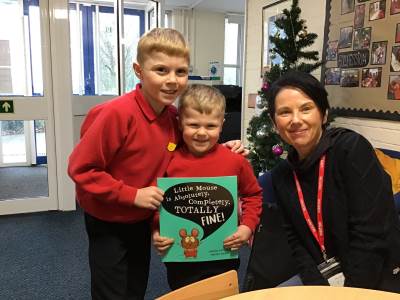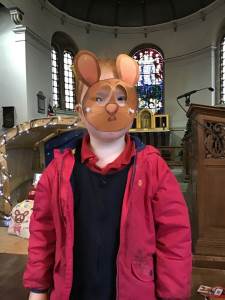Subjects
If you wish to find out more about the National Curriculum that we follow, please click: https://www.gov.uk/government/collections/national-curriculum
Reading
Our reading curriculum is designed to develop and enhance students' reading skills, comprehension abilities, and love for reading. It is aimed at fostering a strong foundation in literacy, enabling students to become confident, fluent, and lifelong readers. The curriculum covers a wide range of fiction and non-fiction texts, ensuring a well-rounded reading experience for students.
Key Elements of our Reading Curriculum:
-
Phonics and Decoding Skills: The curriculum focuses on introducing and solidifying phonics and decoding skills, enabling students to recognise and pronounce words accurately.
- Reading Fluency: Students engage in regular oral reading activities to improve their reading fluency and develop expression, rhythm, and intonation while reading.
-
Vocabulary Expansion: The curriculum engages students in a variety of texts to expand their vocabulary, helping them comprehend complex texts and express themselves fluently.
-
Reading Comprehension: Students are taught various strategies and techniques to improve their reading comprehension skills. They learn to analyse and interpret texts, make inferences, and draw conclusions.
-
Genres and Text Types: The curriculum exposes students to different genres and text types, such as poetry, fiction, non-fiction, folktales, and biographies, to develop their understanding and appreciation of various literary forms.
-
Reading for Pleasure: The curriculum incorporates opportunities for independent reading and provides a wide range of age-appropriate books to inspire a love for reading, fostering self-motivated readers.
-
Reading Strategies and Skills: Students are taught a variety of reading strategies, including predicting, summarising, and making connections to enhance their understanding and engagement with texts.
-
Assessment and Differentiation: Regular assessments and formative feedback are integrated into the curriculum to monitor students' progress and provide targeted instruction based on individual needs. We use paper tests at the end of each term alongside the Fisher Family Trust Reading Assessment Programme.
From Reception class to Year 2, we follow the Little Wandle Letters and Sounds approach. For more information, click the links below:
Click on the links to see what children are expected to be able to read in terms of language and word count rate for each year group:
Reading Expectations - end of Y1
Reading Expectations - end of Y2
Reading Expectations - end of Y3
Reading Expectations - end of Y4
Love for Reading
Our Library
In order to further strengthen children's love for reading, we open our school library for all parents and children to access after school every Friday. Feel free to choose some books to take home for the week and return when you're finished with them. If there are any books that we don't have in stock, please mention this to us as we have some money from our most recent Scholastic Book Fair that could be spent on these.

Recommended Rainbow Reads
We have carefully selected a broad range of texts which children will be exposed to throughout each year group. These might be read to the children, read by the children or used in reading lessons. We call these our Recommended Rainbow Reads.
Take a look to see what your child will be exposed to each year:
Recommended Rainbow ReadsSummer Reading Challenge
Here are a few of the recommended reads from the children:
And some more below:
Author Visit
It was a pleasure to welcome Sharon Hopwood, author of Little Mouse is Absolutely, Completely, Totally Fine! to school.
Sharon told us all about being an author, how long it took her to write her book, how she used her imagination to write the story and how the book can help with our everyday emotions. Some children were part of the workshop and helped act out their emotions by using facial expressions and body language.
We got to meet the character Little Mouse and Sharon came and signed copies of the book.
Sharon has inspired our children to become authors of their own story!
Writing
Writing Curriculum Intent & Implementation
Progression DocumentMaths
Maths Curriculum Intent & Implementation
For more detailed information about the White Rose Scheme that we follow, please click below:
As part of our maths curriculum, our children practise key instant recall facts (known as KIRF's). These are outlined in the table below:
For more detailed information about the Mastery Approach we use and how a typical lesson looks:
RE
We follow the Worcestershire Agreed Syllabus (2025-2030) of which an extract can be found here:
Worcestershire Agreed Syllabus 2025-2030 - an extract
Holy Trinity
Year 4 children learned about the Holy Trinity recently and came up with their own analogies:
/i/video/71a150309c64.mp4
/i/video/5a44ca829343.mp4
/i/video/IMG_2420.mov
/i/video/fa0e6de68696.mp4
Spirituality Across the Curriculum
Spiritual development guidance
- In Religious Education (RE):
o People, places, things, books, actions and ideas held by religious believers to be holy.
o Ultimate questions of meaning and purpose.
o Ideas of the divine / questions of God.
o Forms of worship.
o Use of music, art and drama to express beliefs.
o Varieties of beliefs, celebrations and rituals.
o Ideas of commitment and belonging to groups and institutions.
o The idea of mystery and questions with no clear answers.
- In Literacy:
o Empathy with authors and the characters in stories and plays.
o The appreciation of beauty in language.
o Emotions and sentiments in writing and speech.
o The values of great works.
o Heroes and heroines in literature.
o Imagining oneself as someone else.
o Escaping into other worlds through literature.
o The element of wonder in literature.
- In Maths:
o Infinity and nothing.
o Pattern and order.
o Shape and regularity.
o Truth, certainty and likelihood.
o The universality of mathematics over time and space.
o The wonder of numbers, formulae and equations.
- In Science:
o Wonder as the basis of science.
o Questions of beginning, creation and evolution.
o Discovering the limits of experimentation.
o Birth, life, death and renewal.
o The universe and beyond.
o Regularity and order in science.
o Beliefs in science and the faith of scientists.
o The impact of scientific achievements.
- In Physical Education (PE):
o Being a team member.
o Pushing yourself to the limits.
o Extremes of skill, endurance and achievements.
o Emotion in sport.
o Personal limitation and failure.
o Appreciation of perfection.
o Sportsmanship.
- In Design and Technology (D&T):
o Discovering how something works.
o Appreciating genius.
o Beauty in design.
o Perseverance to solve problems.
o Personal achievement.
o Learning from others and nature.
- In ICT:
o The wonder of worldwide instant communication.
o The speed of the growth of knowledge.
o The accessibility of knowledge and contact with other people worldwide.
- In the Creative Arts (Art, Music, Drama and Dance):
o The work of creative artists from a variety of times and places.
o Beauty, truth and goodness.
o Expressing, interpreting and exploring deep feelings and profound beliefs. o Artistic creativity. o The effects of the arts on emotions and senses.
o The arts as means of expressing mood.
o Skill in creation and performance, and particularly in personal reflection upon their own creativity using various art forms.
o Effects on the emotions and senses.
o Personal response and preference.
o Mood.
o Skill.
o Pattern.
o Formulae.
- In Geography:
o Wonder at the diversity of environments and people.
o Questions about the care of the environment.
o The beliefs behind particular causes and campaigns.
o World (economic) development.
o Land formation.
o Empathy with people from other parts of the world.
- In History:
o Being in touch with past people, things and ideas.
o Being part of history.
o Handling artefacts.
o Influential events and people.
o The commitment of significant people in history.
o War and peace – interpretation in history.
o The nature and importance of invention and exploration.
o Empathy with people from other times in history.
- In Collective Worship:
o Opportunities for reflection and response are planned into worship.
o Stillness.
o Personal and collective beliefs are respected.
o Sharing and celebrating common beliefs.
o Celebrating success.
o Sharing happiness, sorrow, hurt, excitement, anticipation, fear, etc.
o Common activities such as singing, listening, laughing, praying, reflecting on a theme.
o Remembering and celebrating the lives of people of spiritual significance.
o Emphasising common purpose and values.
o Experiencing emotions.
- In addition, as part of the curriculum, pupils have opportunities to:
o visit places of beauty, interest and challenge
o admire and wonder at the natural environment and human creative efforts
o work out personal relationships in unusual and challenging situations
o experience community cohesion links at a local, national and global level
o engage in activities that promote courageous advocacy
o participate in a wide range of events and activities, involving a range of outside agencies, coaches, etc.
Science
Science Curriculum Intent & Implementation
Art
DT
Computing
Computing Curriculum Intent & Implementation
Music
Music Development Plan 2024-25
PE
History
History Curriculum Intent & Implementation
Geography
Geography Curriculum Intent & Implementation
PSHE and RSE
PSHE and RSE information for parents and carers






